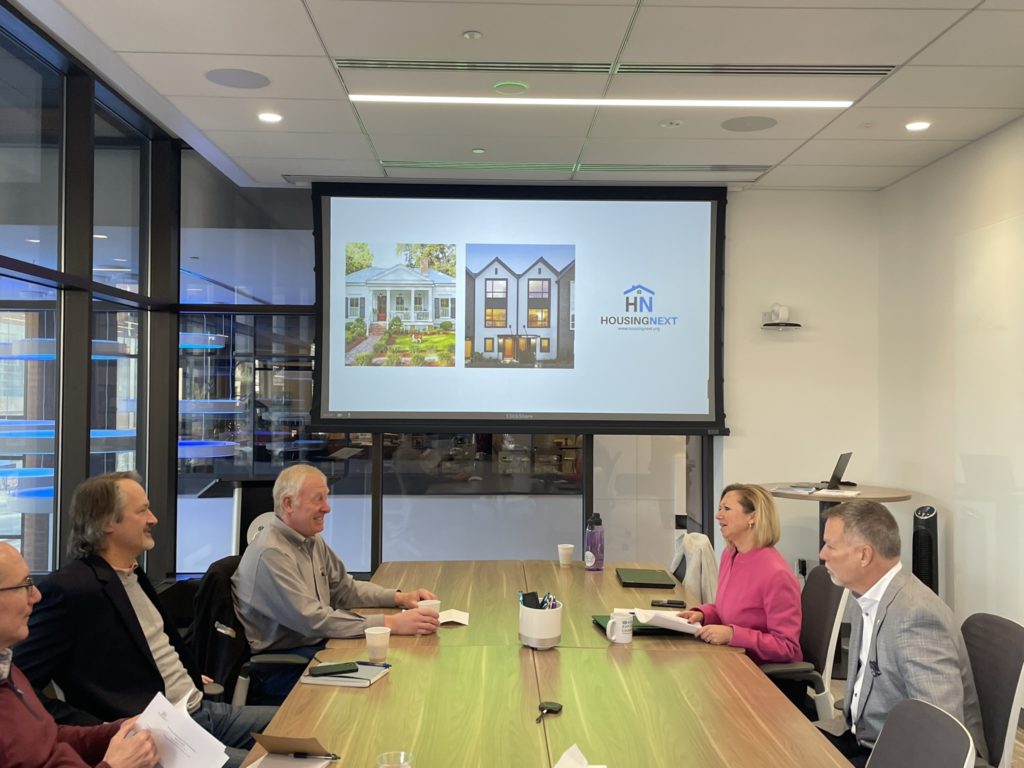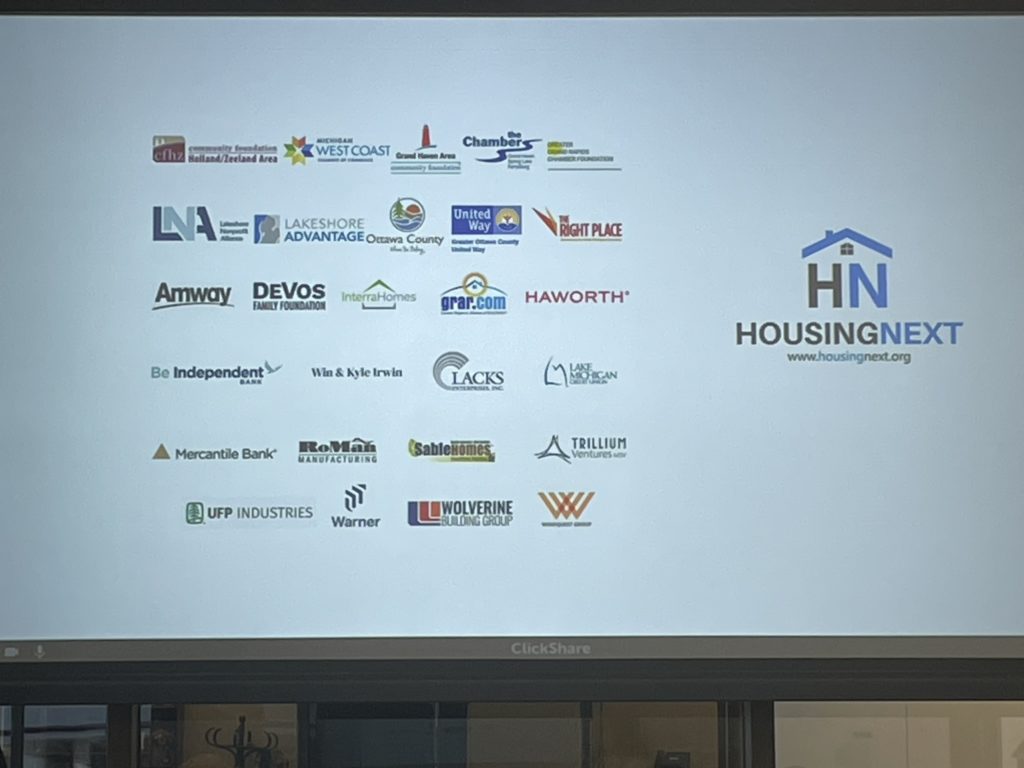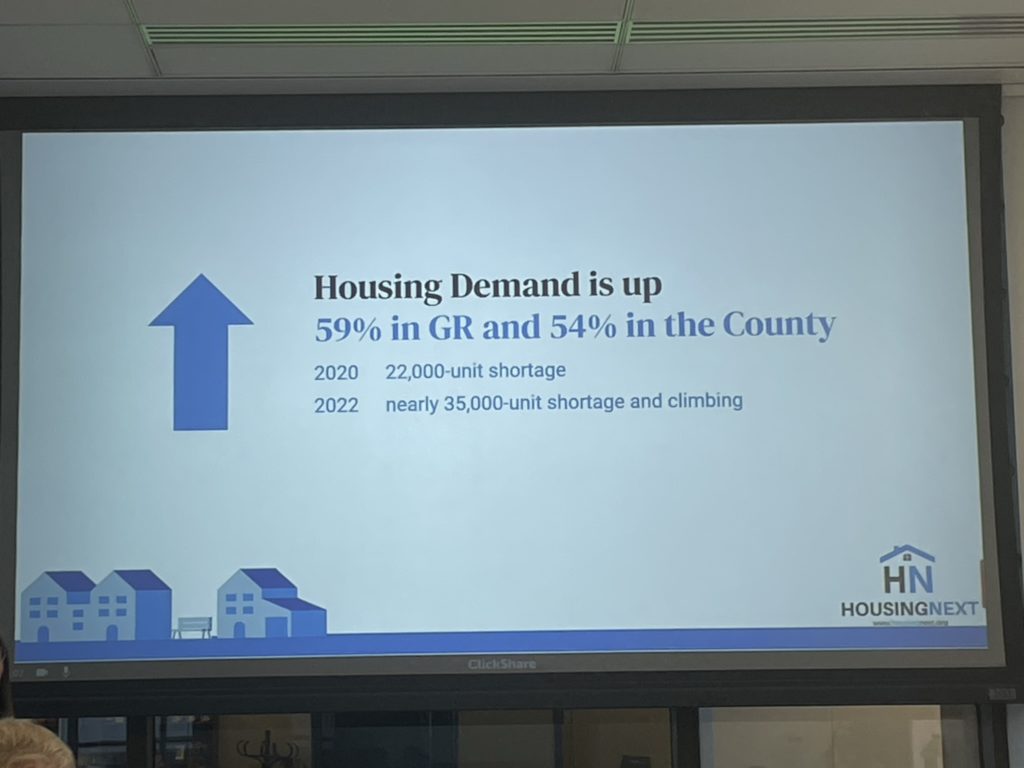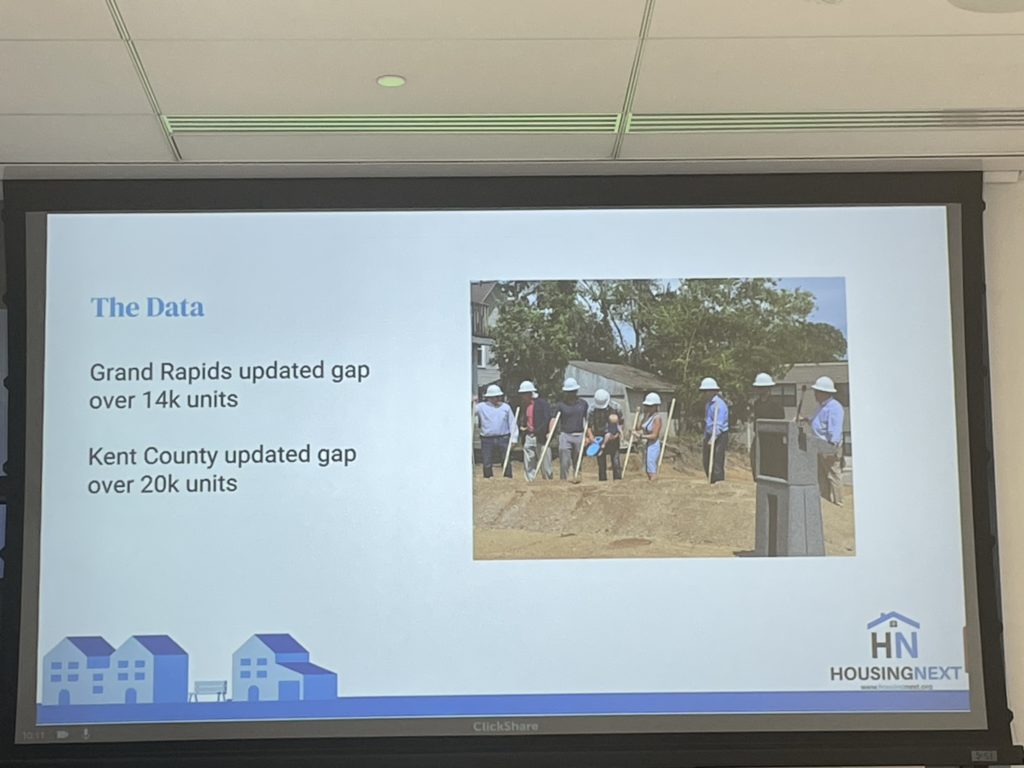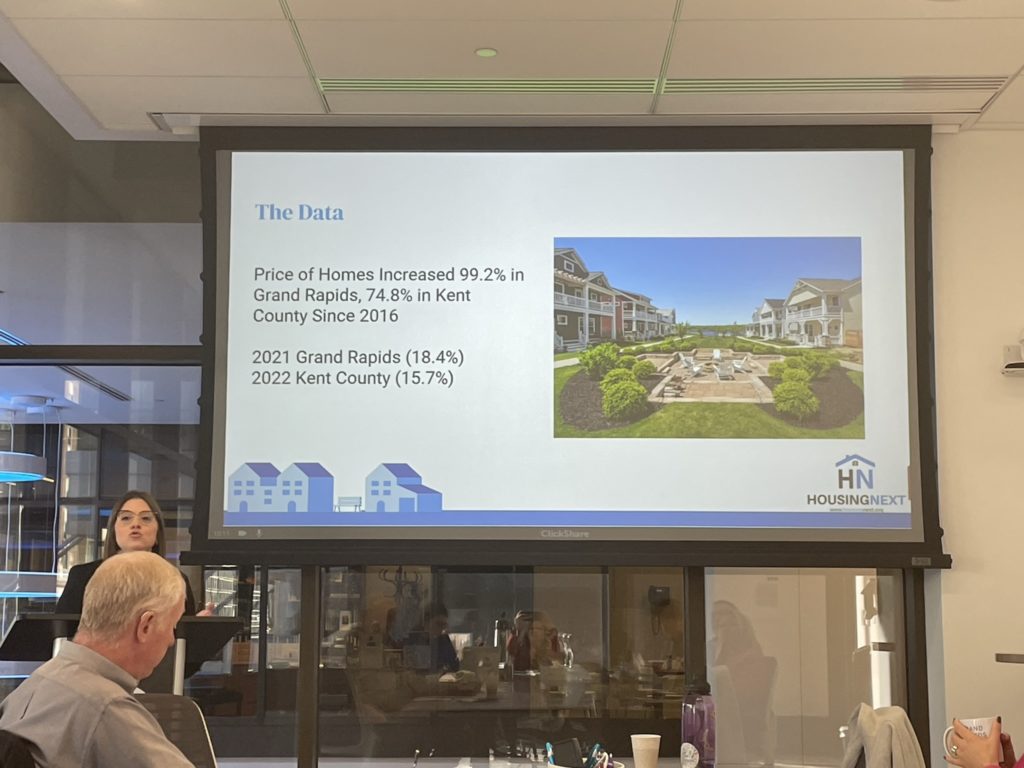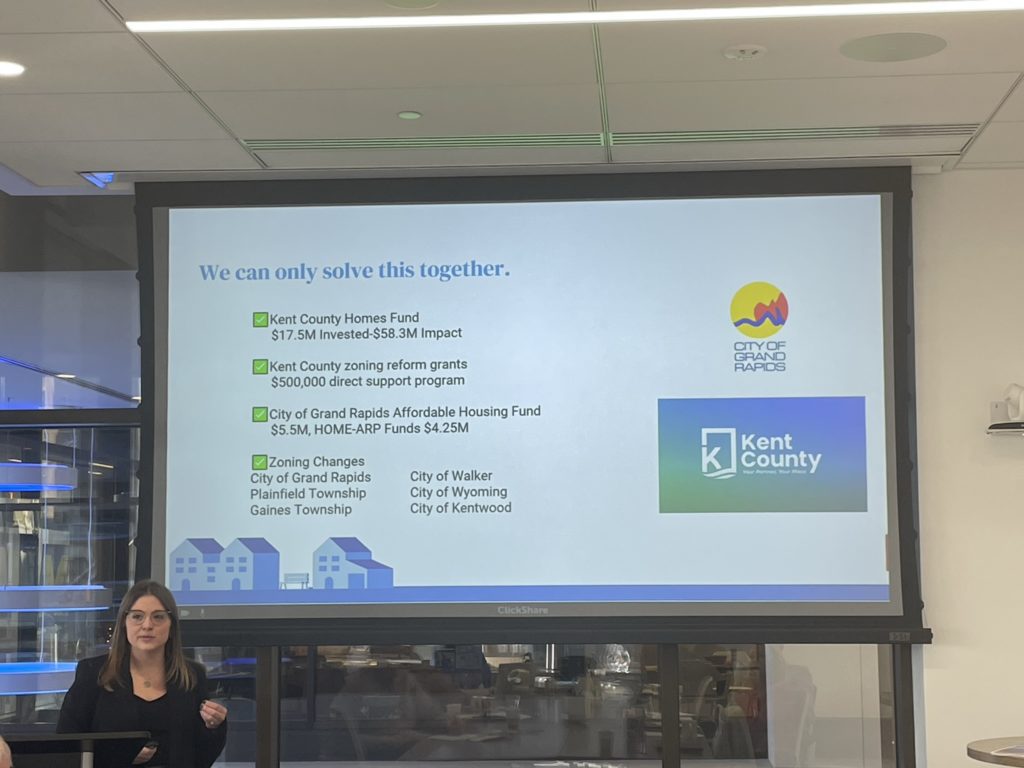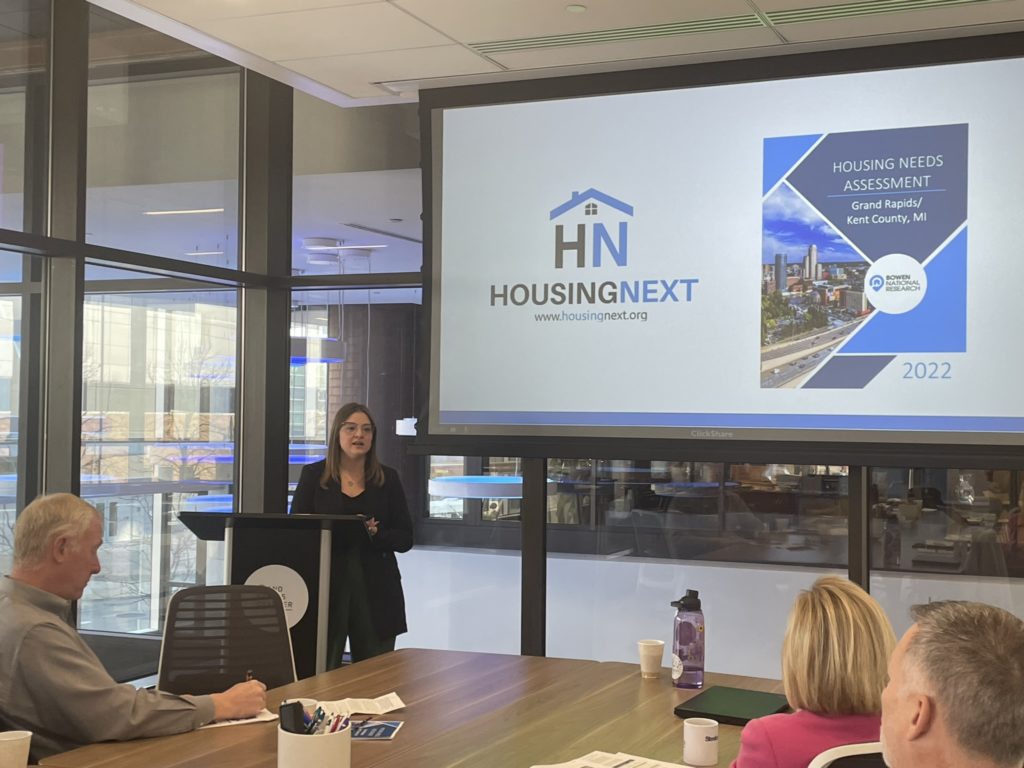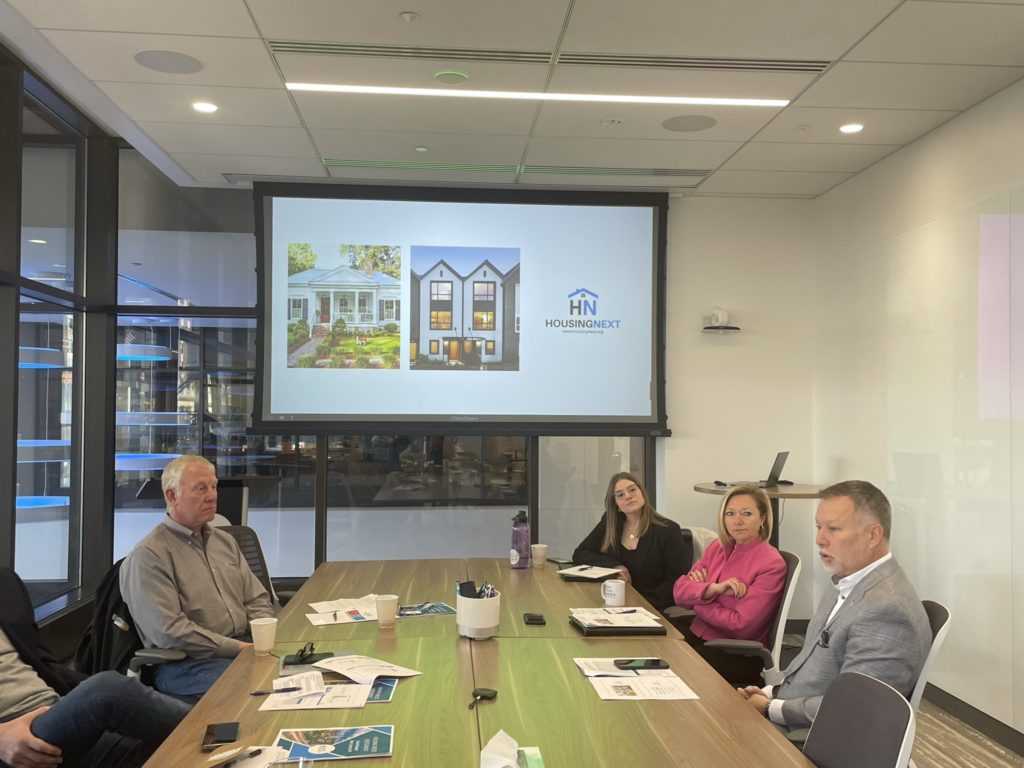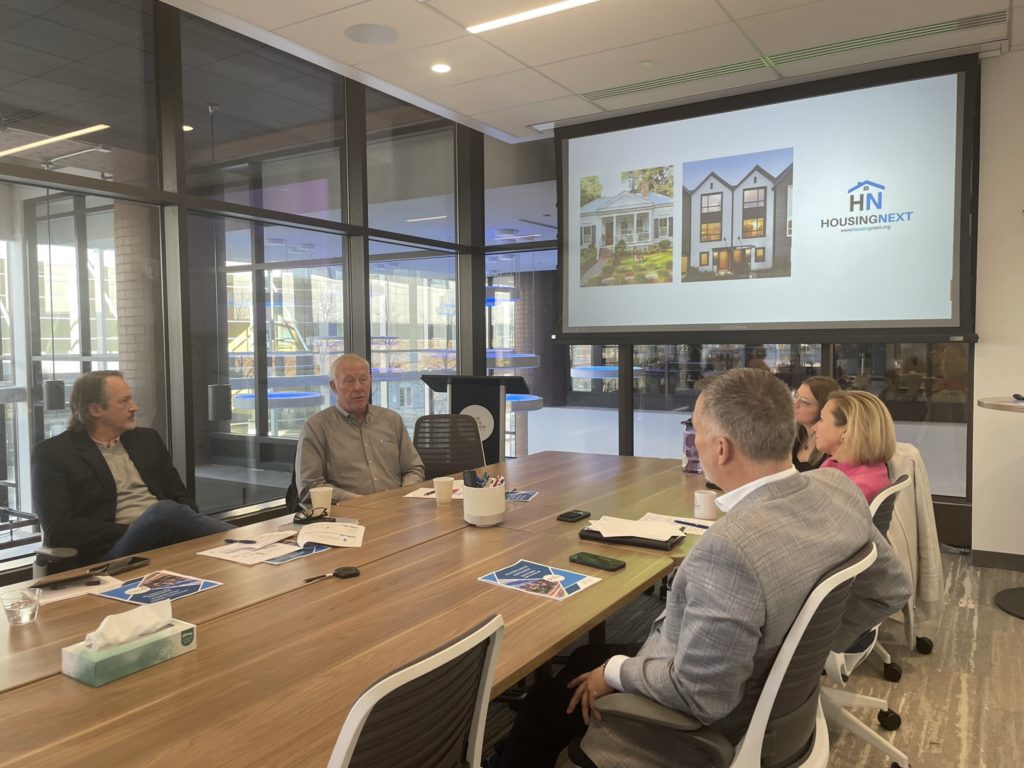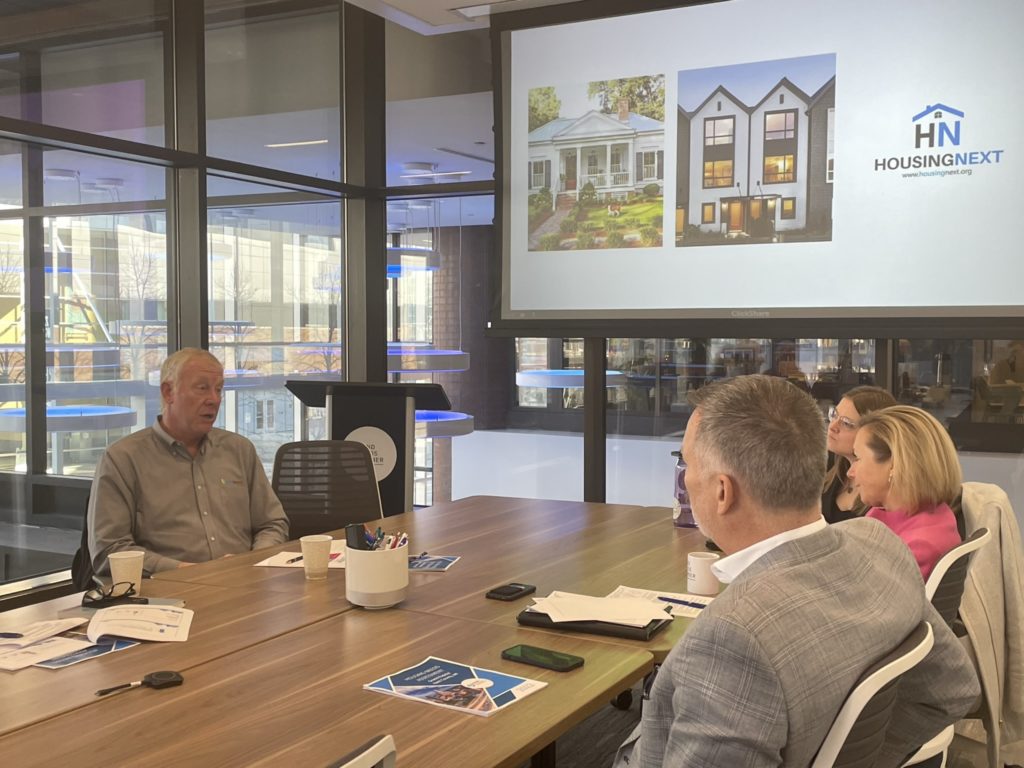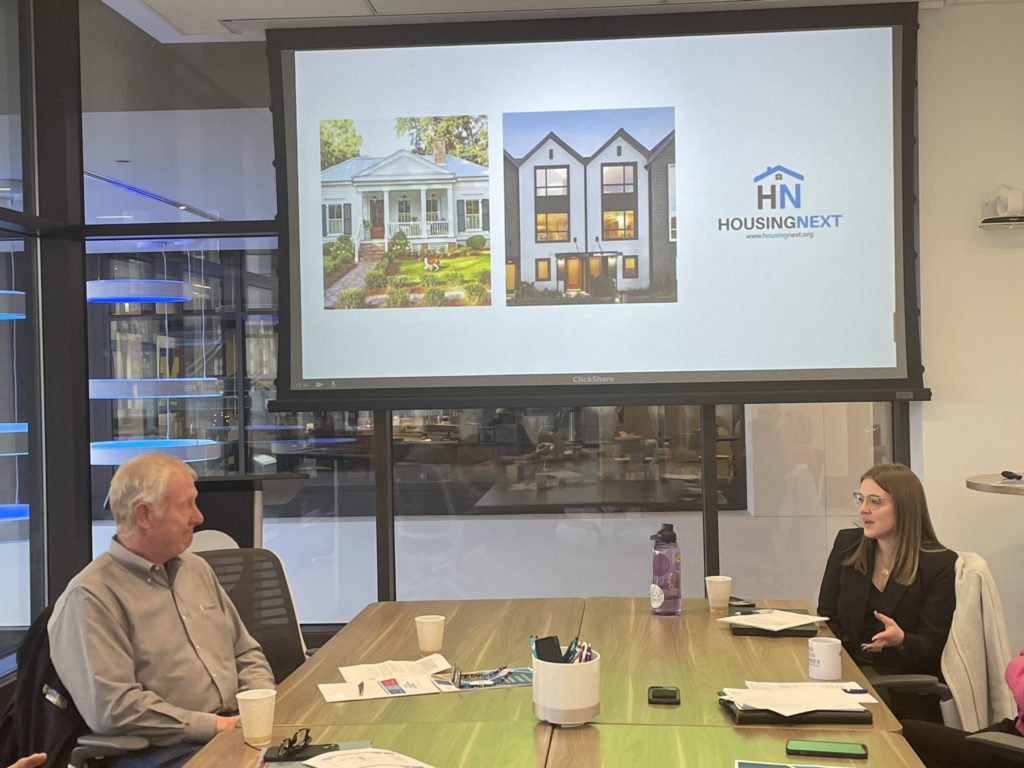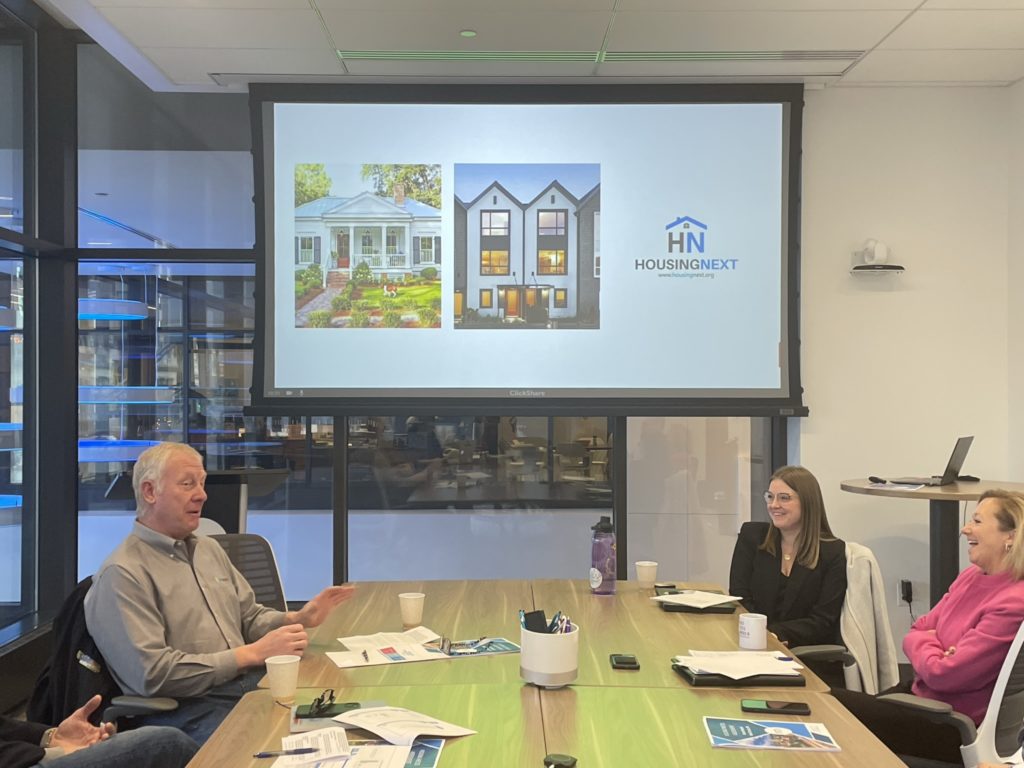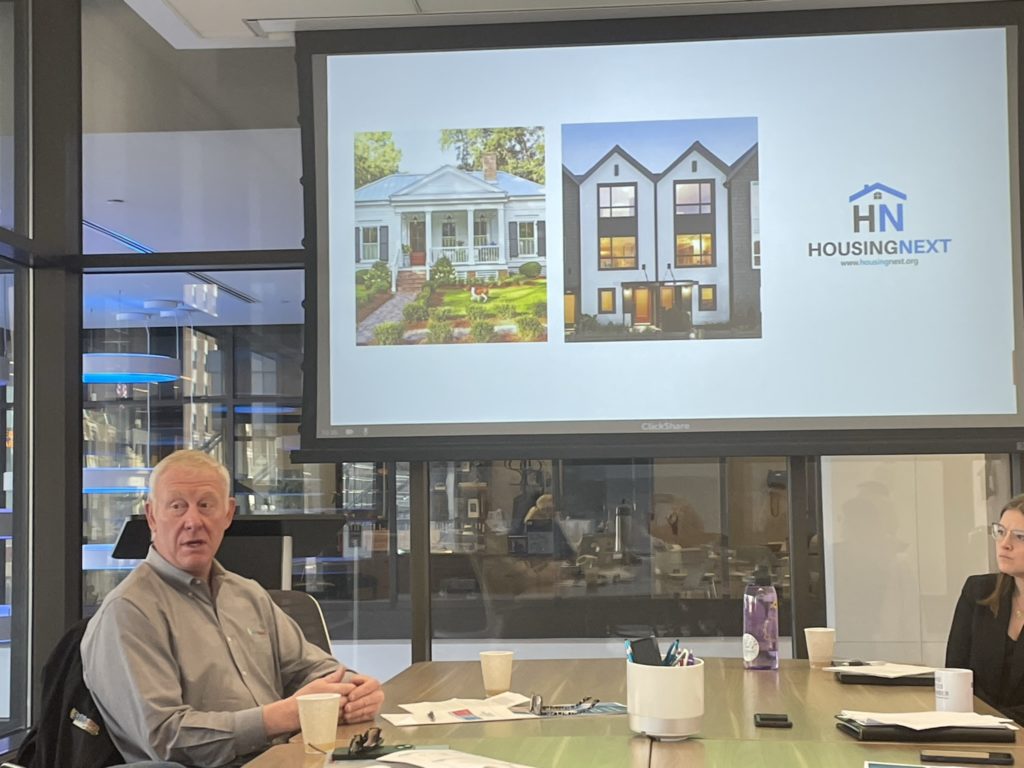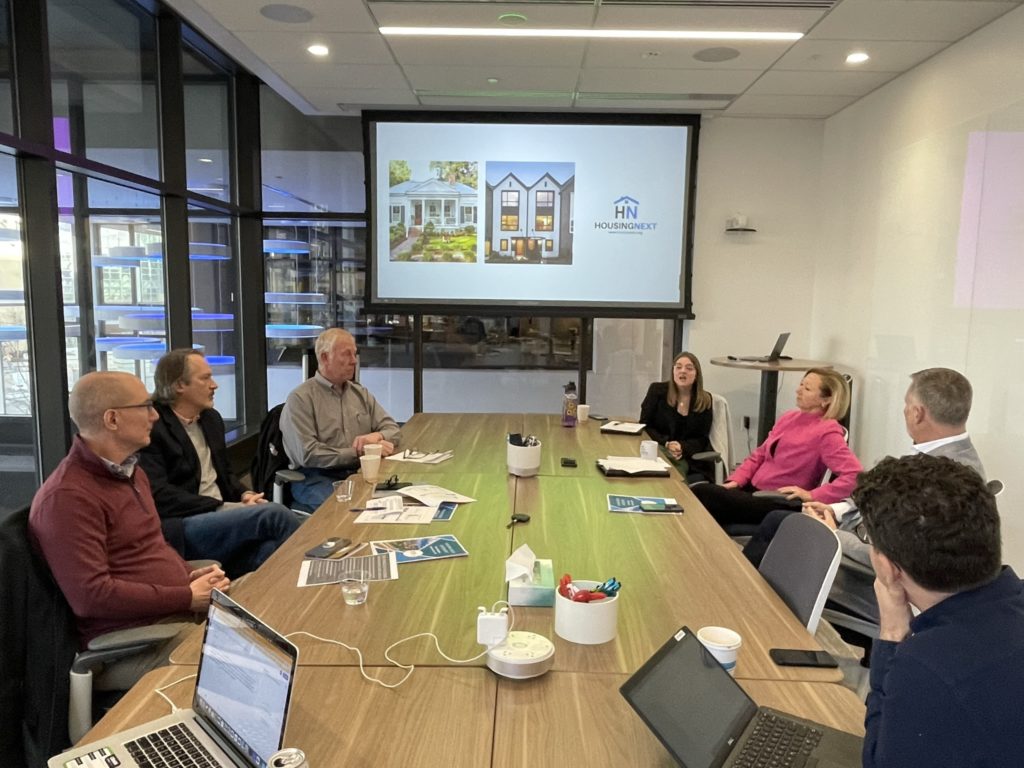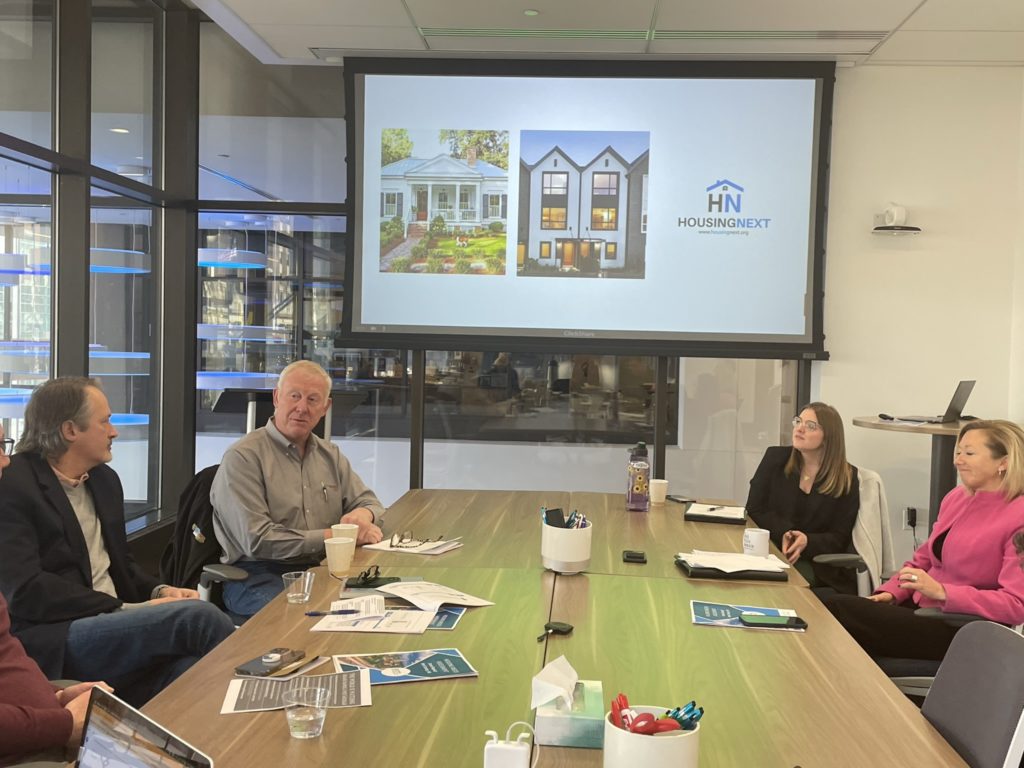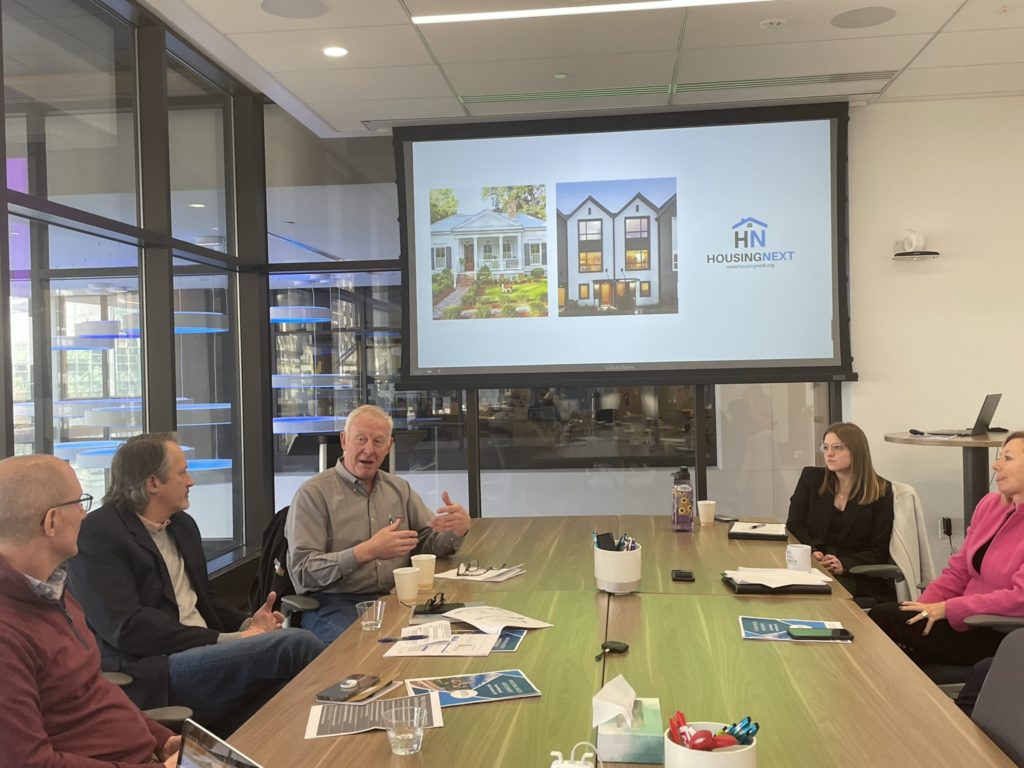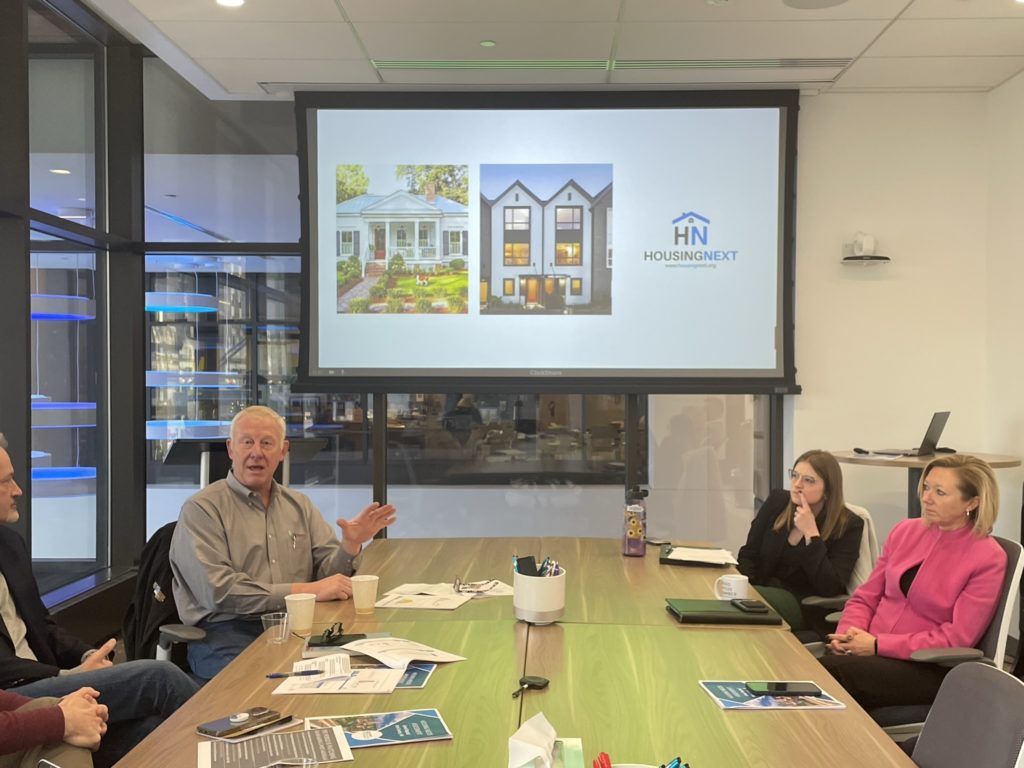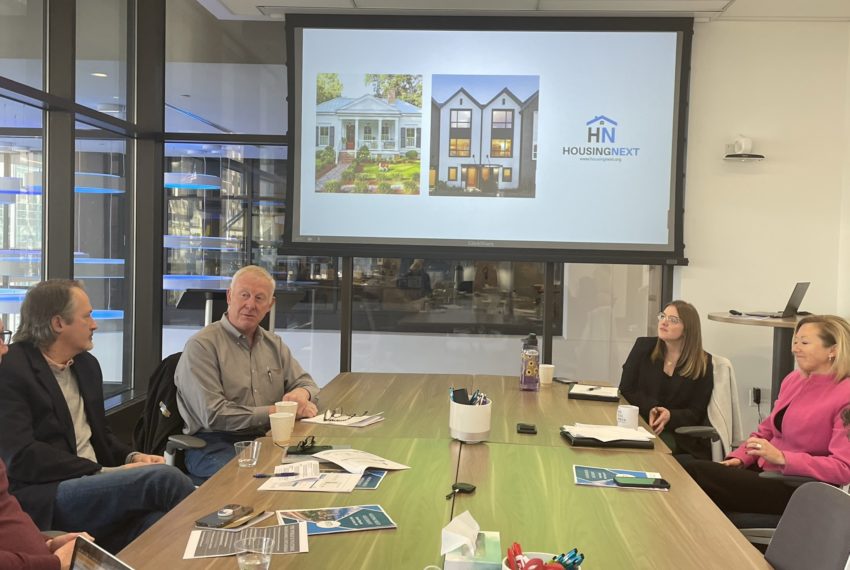
John Bitely joins community leaders in Kent County Housing Assessment roundtable discussion
On Feb. 13, Sable Homes President John Bitely was invited to participate in a media roundtable discussion at the Grand Rapids Chamber hosted by Housing Next, an organization dedicated to advocating for new housing solutions in Kent and Ottawa counties. The roundtable was held in conjunction with the release of the 2022 Kent County Housing Needs Assessment, which provides updated data on housing supply and affordability in Kent County.
Bitely was joined by Grand Rapids Mayor Rosalynn Bliss, Brooke Oosterman of director of Policy and Communications for Housing Next Housing Next, Chamber President and CEO Rick Baker, and Brian Hamrick and Jeff Royce of Victory Development Group.
Oosterman opened the panel discussion with data from the study, which shows housing demand isn’t slowing down for Kent County, and in fact, is outpacing the state in population growth.
Since 2010, Kent County has grown 5 times faster than the state. From 2010-2020, Grand Rapids grew 5.4% and Kent County 10.9%, compared to the state at 2%. While the state of Michigan is expected to decline in population over the next five years, the City of Grand Rapids and Kent County are expected to grow.
In 2020, the first Kent County Housing Needs Assessment determined 22,000 units were needed to accommodate population growth. Due to changes in the market, an update was completed to assess current demand.
The updated Housing Needs Assessment shows an increase in housing needs over the last two years, with a current housing gap of nearly 35,000 units needed by 2027, an increase of roughly 59% since 2020. The gap persists at all price points. However, lower, and middle-income buyers represent over half of the for-sale housing need while the greatest gap in rental units also falls in these income brackets.
“We’ve always had a passion for providing workforce housing – and sometimes we get beat up because we’re building homes for ‘those people’ and not building the McMansions, but it’s a passion and it’s definitely needed, especially in West Michigan,” Bitely said during the roundtable. “We’ve all heard the need for workers, but if we don’t have homes where they can live at a reasonable price, you can’t have the workers. We have great jobs in the area, but we need our local areas to want to embrace this and understand, that as we embrace this realization, it will be good for all of us.”
During the roundtable, Bliss shared that quality housing is needed at every price point throughout all communities, not just a specific area in a community.
“We really need housing at every price point if we’re going to solve the holes in the housing continuum – we need both rentals and owner options,” she said. “The challenges around housing don’t belong to the city alone, it really is a county-wide and regional issue. Fortunately, West Michigan is the bright spot in our state when it comes to population growth and the city can’t solve this alone … it’s about how we work with our private sectors. We’re here to help provide solutions for everyone in our community and work across county lines and across jurisdictional lines to come up with solutions.”
Bitely went on to say that he’s had difficulties building in certain communities because they only want high-end neighborhoods, or have large lots and infrastructure requirements.
“It’s not just zoning and density that affects housing, it’s the reduction of infrastructure costs. When we allow that density – that density changes all of our numbers and effects whether a project can get off the ground,” he told the group. “Things like street widths and improved curb cuts and now our storm water requirements are so much more than what they ever were, and we’re losing one or three lots sometimes in a development that we would have never lost in the past. That’s what’s really affecting our ability to provide attainable housing for families.
“A lot of communities will say no not here,” Bitely added. “It’s growth of knowledge. They haven’t learned yet that bigger lots for a development is not positive for their community. It’s a learning curve and it’s tough.”
The increased gaps in available supply are largely due to increased population and household growth. Kent County has a large population of younger people who are looking for opportunities to call the community home.
Additional data in the new assessment include:
• Near zero vacancy in affordable rental options
• 14,106-unit shortage in the City of Grand Rapids
• 20,593-unit shortage for the rest of Kent County
• Most of the expected growth in the rental market will be among households earning $50,000 or more
• Coupled with rising rents, this puts lower income households at significant risk if new rental units are not built.
• Rapid growth is occurring among owner-occupied households earning above $100,000.
• This trend is straining the market and putting added pressure on middle income households trying to buy a home.
• The median sale price of homes increased 99.2% in Grand Rapids and 74.8% in the rest of Kent County since 2016
• Over the last two years, for-sale housing stock priced below $200,000 has diminished drastically.
• This makes homeownership increasingly out of reach for households earning less than $75,000 per year.
• A reduction in the overall percentage of the population who are considered burdened (30% or more of their income going towards housing)
“We can solve this together, and we can create 35,000 more units to support a growing West Michigan before this decade is out. We have the tools, we have the resources, we know what levers to pull, we know what partners to bring together and we have to do it and we have to do it now,” said Oosterman. “The great news is while housing is a huge issue, it is a solvable one. Efforts that drive supply solutions forward are already underway. This new data amplifies the importance of accelerating this work.”
See the full 2022 Housing Needs Assessment report, here
Related:
MLive: Grand Rapids, Kent County need 34,699 new housing units by 2027. Can it be done?

